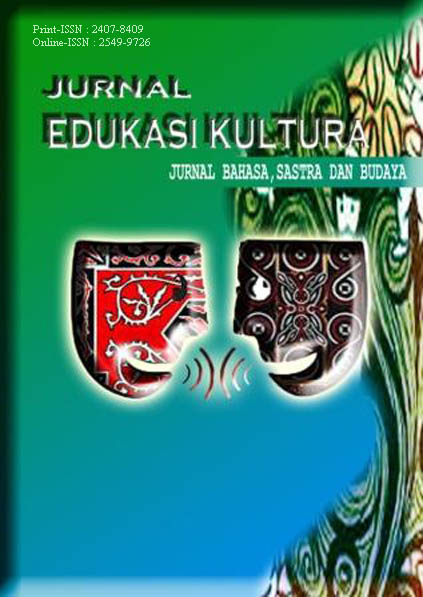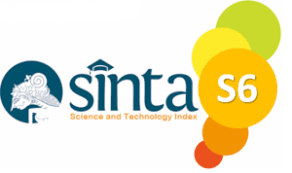EFEKTIVITAS MEDIA PEMBELAJARAN DIGITAL DI SDN 060852 MEDAN: ANTARA HARAPAN DAN KENYATAAN
DOI:
https://doi.org/10.24114/kultura.v1i2.11716Keywords:
Media Pembelajaran Digital, Efektivitas Pembelajaran, Sekolah Dasar, Inovasi PendidikanAbstract
This study examines the effectiveness of implementing digital learning media at SDN 060852 Medan, focusing on the gap between student expectations and the reality of implementation. In the digital era, digital learning media is expected to enhance the quality of education, but its implementation in elementary schools faces challenges. The aim of this research is to analyze the use of digital learning media, student perceptions, and teacher obstacles. This study employments a mixed-methods approach, combining quantitative information from sixth-grade understudy surveys with subjective information from educator interviews. Questionnaires measure student enthusiasm, perceptions of effectiveness, and difficulties. Interviews aim to understand the practices of using digital media, challenges, and teacher views. The results of the study show high student enthusiasm for digital learning media. They believe technology makes learning interesting and effective. However, its implementation is limited due to infrastructure, lack of teacher training, and technical constraints. This study emphasizes the importance of bridging the gap between expectations and reality to maximize the potential of digital learning media in improving the quality of education in elementary schools.References
Clark, R. C., & Mayer, R. E. (2016). E-Learning and the Science of Instruction: Proven Guidelines for Consumers and Designers of Multimedia Learning.
Creswell, John W. A concise introduction to mixed methods research. SAGE publications, 2021.
Elvira. (2021). Faktor Penyebab Rendahnya Kualitas Pendidikan dan Cara Mengatasinya (Studi pada: Sekolah Dasar di Desa Tonggolobibi). Iqra: Jurnal Ilmu Kependidikan Dan Keislaman, 93–98.
Heinich, R., Molenda, M., Russell, J. D., & Smaldino, S. E. (2002). Instructional Media and Technologies for Learning. Prentice Hall.
Iskandar, S., & dkk. (2023). Efektivitas Media Pembelajaran Interaktif Terhadap Hasil Belajar Siswa Kelas 5 Sekolah Dasar. Guru Kita, 557-566.
Jamun, M. (2018). Dampak Teknologi Terhadap Pendidikan. Jurnal Pendidikan Dan Kebudayaan Missio, 1–136.
Lestari, D., & dkk. (2024). Efektivitas Penggunaan Media Pembelajaran Digital dalam Meningkatkan Minat dan Hasil Belajar Siswa SDN 3 Karangrejo. Literasi Kajian Sastra dalam Perspektif di Era Digital, (pp. 101-116). Bali.
Lincoln, Yvonna S., and Norman K. Denzin. "The fifth moment." Handbook of qualitative research 1 (1994): 575-586.
Mayer, R. E. (2009). Multimedia Learning. Cambridge University Press.
McQuail, D. (2010). McQuail's Mass Communication Theory. Sage Publications.
Novita, & Sundari. (2020). Peningkatan Hasil Belajar Siswa Menggunakan Media Game Ular Tangga Digital. Jurnal Basicedu, 716–724.
Nurfadhillah, & dkk. (2021). Peranan Media Pembelajaran Dalam Meningkatkan Minat Belajar Siswa SD Negeri Kohod III. PENSA: Jurnal Pendidikan Dan Ilmu Sosial, 243–255.
Nurgiansah. (2022). Meningkatkan Minat Belajar Siswa dengan Media Pembelajaran Konvensional dalam Pembelajaran Pendidikan Kewarganegaraan. Jurnal Pendidikan Dan Konseling, 1529–1534.
Rosmana, P. S., & dkk. (2023). Efektivitas Penggunaan Media Pembelajaran Digital Pada Hasil Belajar Siswa Kelas 5 SDN 6 Nagri Kaler. Jurnal Sinektik, 10-17.
Sugiyono, F. X. Neraca Pembayaran: Konsep, Metodologi dan Penerapan. Vol. 4. Pusat Pendidikan Dan Studi Kebanksentralan (PPSK) Bank Indonesia, 2017
Sunami, & Aslam. (2021). Pengaruh Penggunaan Media Pembelajaran Video Animasi Berbasis Zoom Meeting terhadap Minat dan Hasil Belajar IPA Siswa SekolahDasar. urnal Basicedu, 1940–1945.
Utomo, F. T. (2023). Inovasi Media Pembelajaran Interaktif untuk Meningkatkan Efektivitas Pembelajaran Era Digital di Sekolah Dasar. Pendas:Jurnal Ilmiah Pendidikan Dasar, 3635-3645.
Published
How to Cite
Issue
Section
License
Copyright (c) 2018 EDUKASI KULTURA : JURNAL BAHASA, SASTRA DAN BUDAYA

This work is licensed under a Creative Commons Attribution 4.0 International License.

This work is licensed under a Creative Commons Attribution 4.0 International License
Authors who publish with this journal agree to the following terms:
- Authors retain copyright and grant the journal right of first publication with the work simultaneously licensed under Creative Commons Attribution 4.0 International License that allows others to share the work with an acknowledgement of the work's authorship and initial publication in this journal.
- Authors are able to enter into separate, additional contractual arrangements for the non-exclusive distribution of the journal's published version of the work (e.g., post it to an institutional repository or publish it in a book), with an acknowledgement of its initial publication in this journal.Penulis.
- Authors are permitted and encouraged to post their work online (e.g., in institutional repositories or on their website) prior to and during the submission process, as it can lead to productive exchanges, as well as earlier and greater citation of published work (Refer to The Effect of Open Access).














